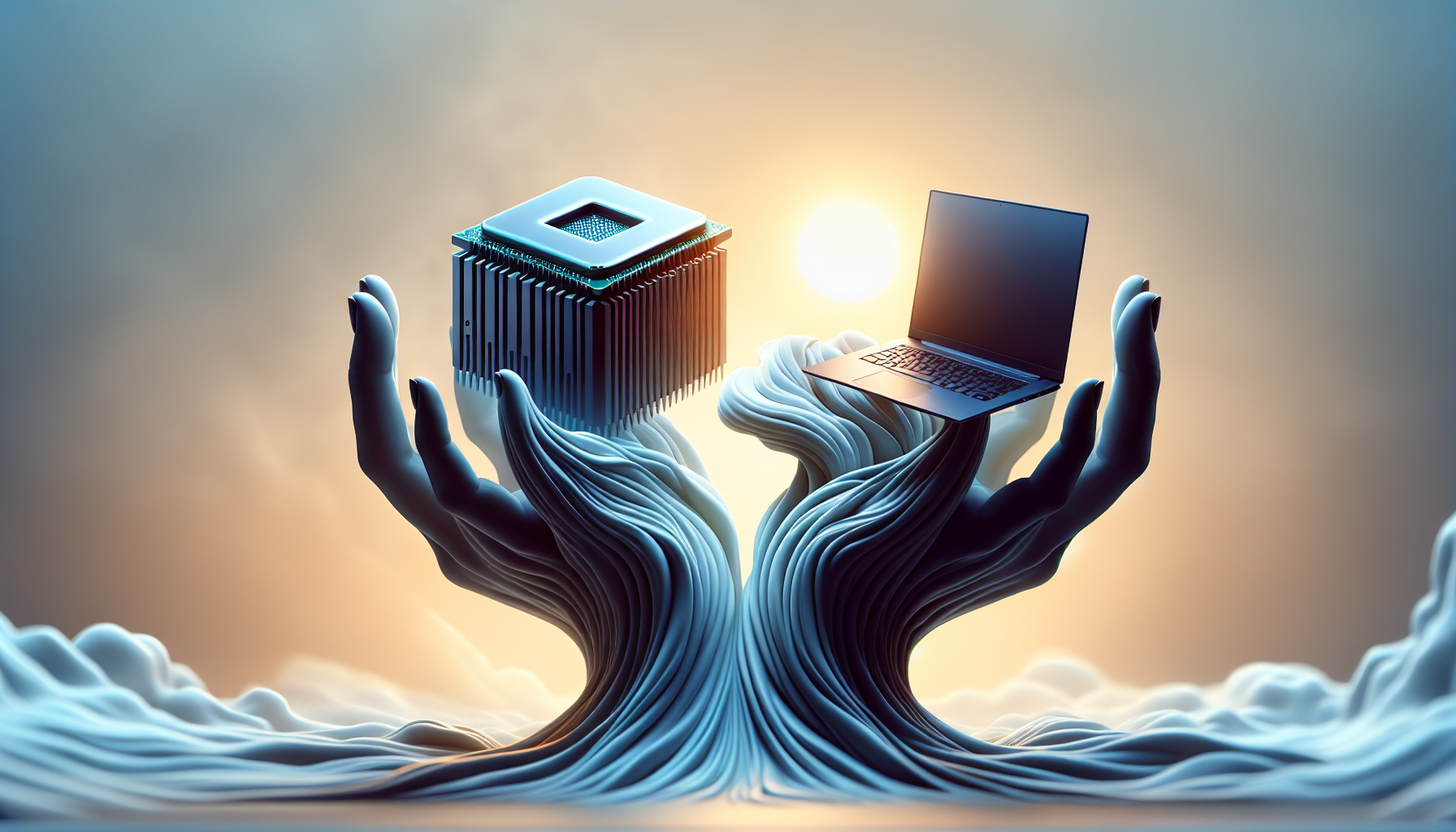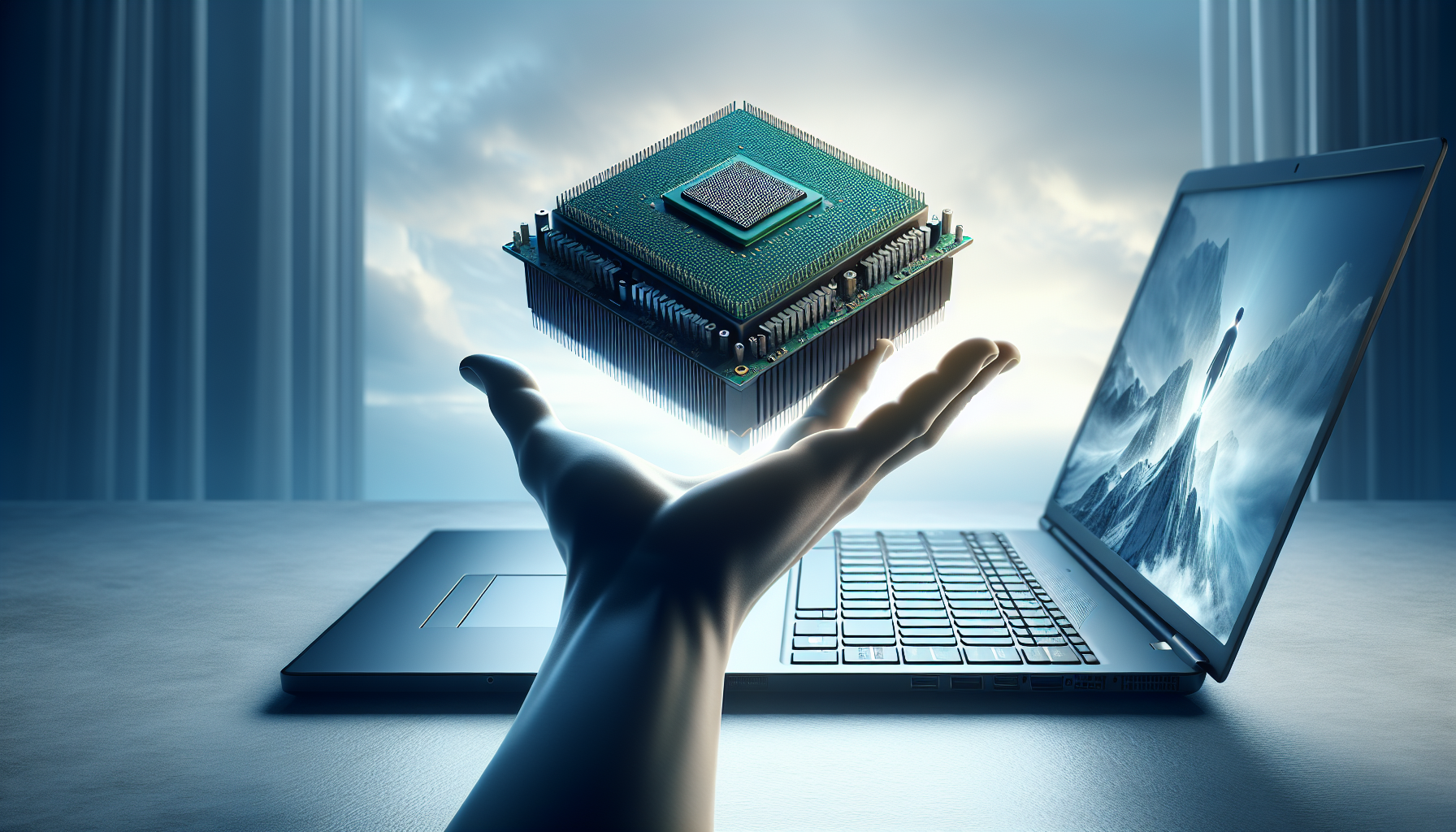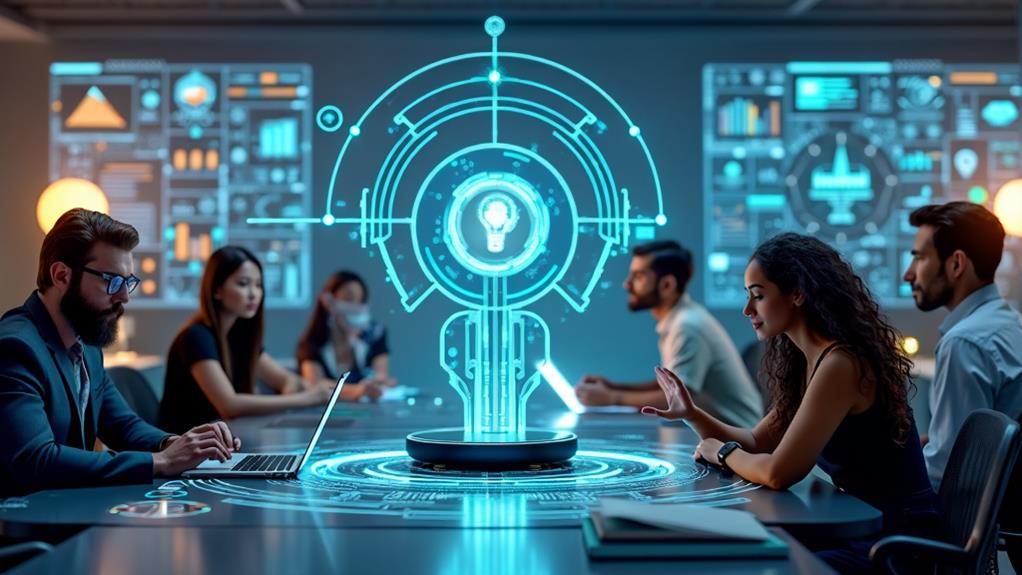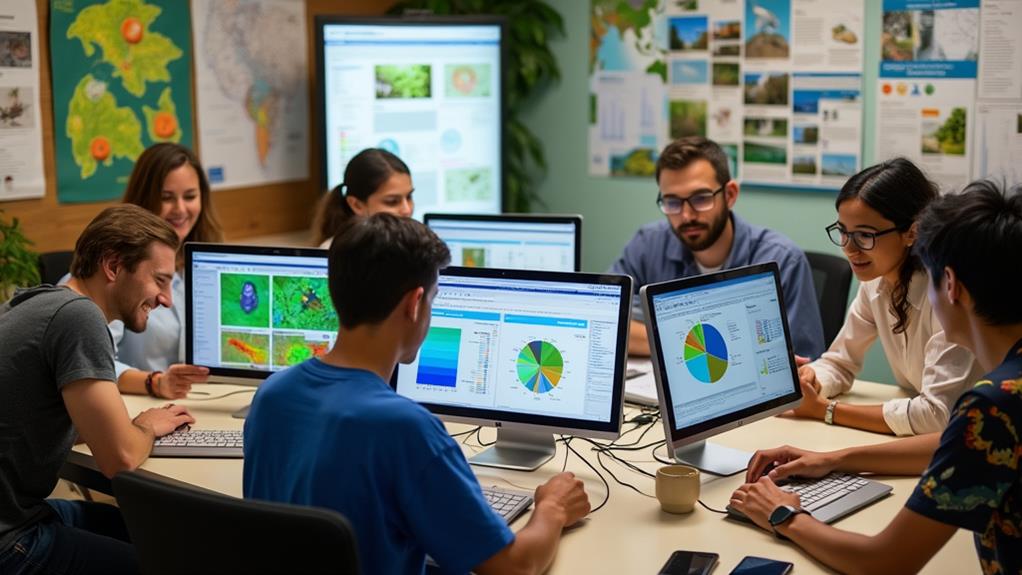



Have you ever wondered how the internal components of a mini PC stack up against those of a laptop? From processors to storage, there are several key differences to consider. In this article, we will explore the varying specifications, performance capabilities, and form factors of these two popular computing devices. Whether you’re looking for a compact and portable option or a more versatile and powerful machine, understanding the similarities and differences between mini PCs and laptops will help you make an informed decision for your computing needs. So, let’s dive into the world of mini PCs and laptops and explore the fascinating world of their internal components.
Processor
Types of Processors Used in Mini PCs
When it comes to mini PCs, there are various types of processors available to meet different performance needs. These include Intel Core i3, i5, and i7 processors, as well as AMD Ryzen processors. These processors are designed to offer a balance between power and energy efficiency, making them suitable for a range of tasks such as web browsing, multimedia consumption, and light gaming. Mini PCs also come with different generations of processors, with newer generations offering improved performance and energy efficiency.
Types of Processors Used in Laptops
Laptops, on the other hand, typically use processors similar to those found in mini PCs. However, due to the larger form factor and the need to balance performance and energy efficiency, laptops often come with more powerful processors than their mini PC counterparts. This allows laptops to handle demanding tasks such as video editing, graphic design, and gaming. Popular laptop processors include Intel Core i5, i7, and i9 processors, as well as AMD Ryzen processors.
Performance Comparison
In terms of performance, laptops generally have the upper hand over mini PCs. This is primarily due to the more powerful processors and dedicated graphics options available in laptops. Laptops can handle resource-intensive tasks with ease and provide a smoother user experience, especially when it comes to multitasking and running demanding applications. However, it’s worth noting that unless you have specific high-performance requirements, mini PCs can still deliver satisfactory performance for everyday computing tasks.
Power Consumption
Mini PCs are designed to be energy-efficient and consume less power compared to laptops. This is because mini PCs prioritize compactness and often use low-power processors. With their smaller form factor and reduced power requirements, they are a great choice for those looking for an eco-friendly computing option or for locations where electricity supply might be limited. Laptops, on the other hand, require larger batteries to power their components, making them more energy-consuming devices overall.
Memory (RAM)
RAM Capacity in Mini PCs
When it comes to RAM capacity, mini PCs usually come with varying options. Depending on the intended use, mini PCs may have anywhere from 4GB to 32GB of RAM. This provides enough memory to handle everyday computing tasks such as web browsing, document editing, and media playback. However, for more demanding applications like video editing or gaming, opting for a mini PC with higher RAM capacity would be beneficial to ensure smooth performance.
RAM Capacity in Laptops
In laptops, RAM capacity is usually higher compared to mini PCs. Laptops typically come with a minimum of 8GB of RAM, with options going up to 64GB or even higher in some high-end models. This increased capacity enables laptops to handle resource-intensive tasks without any slowdowns or bottlenecks. Whether you’re running multiple applications simultaneously or working with large files, having ample RAM in your laptop ensures a more efficient and seamless computing experience.
RAM Speed Comparison
When it comes to RAM speed, both mini PCs and laptops offer similar options. DDR4 RAM is the most common type used in both devices, and it provides faster data transfer rates compared to older DDR3 technology. Higher RAM speed allows for quicker retrieval and storage of data, resulting in improved overall system performance. Whether it’s opening applications, loading files, or multitasking, having faster RAM speeds ensures a more responsive and snappy computing experience.
Expandability
In terms of expandability, mini PCs and laptops differ. While a few mini PCs may offer limited options for RAM expansion, most mini PCs prioritize compactness over expandability. On the other hand, many laptops offer the flexibility of upgrading or adding more RAM as per your requirements. This allows users to future-proof their laptops and extend their lifespan by increasing the RAM capacity whenever needed. If expandability is a crucial factor for you, opting for a laptop would be a better choice.

Storage
Types of Storage Used in Mini PCs
Mini PCs commonly utilize different types of storage to suit various needs. One of the popular storage options in mini PCs is solid-state drives (SSDs). SSDs provide faster read and write speeds compared to traditional hard disk drives (HDDs), resulting in quicker boot times, faster application loading, and improved overall system performance. Some mini PCs also support M.2 NVMe SSDs, which offer even faster data transfer rates, making them ideal for handling large files and multitasking.
Types of Storage Used in Laptops
Similar to mini PCs, laptops also come with a variety of storage options. Many laptops now come with SSDs as the primary storage solution, offering improved speed and performance compared to HDDs. The capacity of SSDs in laptops can range from 128GB to 2TB or more, depending on the model and configuration. Additionally, some laptops may still offer HDD options for users who require larger storage capacities at a more affordable price point.
Storage Capacity Comparison
Laptops generally offer higher storage capacities compared to mini PCs. This is because laptops have more physical space for larger storage drives. While mini PCs typically offer storage capacities ranging from 128GB to 1TB, laptops can offer storage options up to several terabytes. The increased storage capacity in laptops allows users to store a larger amount of data, including multimedia files, games, and other resource-intensive applications.
Speed and Access Time
In terms of speed and access time, both mini PCs and laptops benefit from the use of solid-state storage options. SSDs used in both mini PCs and laptops provide faster data transfer rates compared to traditional HDDs. This results in shorter boot times, faster file transfers, and quicker application loading times. Whether it’s launching your favorite game or accessing large files, SSDs in both mini PCs and laptops ensure smoother and more responsive computing experiences.
Graphics
Integrated Graphics in Mini PCs
Mini PCs usually come with integrated graphics, which means the graphics processing unit (GPU) is integrated into the processor itself. While integrated graphics may not offer the same level of performance as dedicated graphics cards, they are perfectly suited for everyday tasks such as web browsing, document editing, and multimedia consumption. Integrated graphics in mini PCs can still handle casual gaming, but for more demanding games or graphics-intensive applications, you may need to lower the graphical settings or consider an external graphics solution.
Dedicated Graphics in Laptops
Laptops, especially those targeted towards gaming or graphic design, often come equipped with dedicated graphics cards or GPUs. Dedicated graphics cards have their own dedicated video memory and processing power, providing superior performance when it comes to handling graphical tasks. These dedicated GPUs excel at running resource-intensive applications, high-resolution gaming, and professional tasks such as video editing or 3D modeling. If you require powerful graphics capabilities, opting for a laptop with dedicated graphics is the way to go.
Graphics Performance
When it comes to graphics performance, laptops with dedicated graphics have a significant advantage over mini PCs with integrated graphics. Dedicated graphics cards offer more processing power and dedicated video memory, allowing them to handle demanding tasks and high-resolution gaming without compromising performance. Integrated graphics in mini PCs, although capable of handling everyday computing needs, may struggle with highly demanding graphical applications or newer games that require more powerful graphics processing.
Support for External Displays
Both mini PCs and laptops often come equipped with multiple display outputs, allowing users to connect external monitors or even set up multi-monitor setups. This provides flexibility for productivity tasks and multimedia consumption, as well as expanding the screen real estate for increased workflow efficiency. Whether you prefer working on a larger display or want to enjoy high-quality multimedia content on a big screen, both mini PCs and laptops offer the necessary connectivity options to accommodate external displays.

Connectivity
Ports and Interfaces in Mini PCs
Mini PCs typically come with a variety of ports and interfaces, albeit in limited quantities due to their compact size. Common ports found in mini PCs include USB-A, USB-C, HDMI, DisplayPort, Ethernet, and audio jacks. These ports allow you to connect peripherals such as keyboards, mice, external storage devices, printers, and monitors. While the number of ports may vary depending on the model, mini PCs offer sufficient connectivity options to meet most users’ needs.
Ports and Interfaces in Laptops
Laptops generally offer a wider range of ports and interfaces compared to mini PCs. Along with USB-A, USB-C, HDMI, DisplayPort, Ethernet, and audio jacks, laptops often include additional features like SD card readers, Thunderbolt ports, and dedicated charging ports. This increased variety of ports enables more flexibility and convenience when connecting various devices and peripherals. Whether you need to transfer files, connect to external displays, or charge your laptop, laptops provide a wider array of options.
Wireless Connectivity
Both mini PCs and laptops come with built-in wireless connectivity options, allowing you to connect to the internet and other devices without the need for cables. Wi-Fi is a standard feature in both devices, with support for various Wi-Fi standards such as 802.11ac and the newer 802.11ax (Wi-Fi 6). This ensures fast and reliable wireless internet connections, enabling smooth online experiences. Additionally, Bluetooth connectivity is also present in both mini PCs and laptops, allowing you to connect wireless peripherals like keyboards, mice, and headphones.
Expansion Options
While mini PCs may offer limited physical expansion options due to their compact size, some models do provide options for expanding storage or adding additional components. This can be done through the use of expansion ports or slots such as M.2 slots for SSD upgrades or additional RAM slots for memory expansion. Laptops, on the other hand, often provide more flexibility in terms of expansion. Along with storage and RAM upgrades, some laptops also allow users to replace or upgrade components like the CPU or GPU, extending the overall lifespan and performance capabilities of the device.
Form Factor and Portability
Mini PCs’ Compact Size and Weight
One of the major advantages of mini PCs is their compact size and lightweight design. Mini PCs are significantly smaller in physical dimensions compared to laptops, making them easy to fit into tight spaces or carry around. Their compact size allows for discreet placement behind monitors or in areas where space is limited. Additionally, mini PCs are lightweight, making them convenient to transport when needed. Whether you want to set up a home theater PC or need a portable computing solution, mini PCs offer excellent form factor and portability.
Laptops’ Portability and Form Factors
Laptops, as the name suggests, are designed specifically for portability. Their form factors are optimized for easy transportation, enabling users to work or entertain themselves on the go. Laptops come in various sizes, including ultrabooks, 2-in-1 convertibles, and gaming laptops, catering to different user preferences and needs. The compactness of laptops allows for easy storage in backpacks or carry-on luggage, making them ideal for students, professionals, or anyone who requires a mobile computing solution.
Flexibility and Mobility
Both mini PCs and laptops offer flexibility and mobility in their own ways. Mini PCs are flexible in terms of placement options, as they can be used as desktop computers or media centers, and their small size allows for easy integration into existing setups. On the other hand, laptops provide the ultimate mobility, allowing you to work or enjoy multimedia content from any location with a power source. Whether you prioritize flexibility in terms of usage scenarios or maximum mobility, both mini PCs and laptops offer compelling options depending on your specific needs.
Cooling
Cooling Mechanisms in Mini PCs
Mini PCs utilize various cooling mechanisms to dissipate heat generated by the internal components. Due to their small form factor and limited space for cooling solutions, mini PCs often rely on passive cooling or small fans to keep temperatures in check. Passive cooling involves the use of heat sinks, which absorb and radiate heat away from the components. Some mini PCs may also incorporate small fans to enhance airflow and improve cooling efficiency. While these cooling mechanisms are generally sufficient for everyday tasks, heavy workloads or high ambient temperatures may cause mini PCs to experience higher thermal levels.
Cooling Mechanisms in Laptops
Laptops employ more advanced cooling systems compared to mini PCs, primarily due to the larger space available for heat dissipation. Laptops typically feature heat pipes, large heatsinks, and fans to actively cool down the internal components. Heat pipes efficiently transfer heat away from hot spots, while heatsinks dissipate the heat into the surrounding air. The fans then circulate the air to maintain optimal temperatures. Some high-performance laptops even incorporate advanced cooling technologies such as vapor chambers or multiple fans for improved thermal management during intense usage.
Heat Dissipation and Noise Levels
Due to their compact size, mini PCs may experience higher heat dissipation and, consequently, higher noise levels compared to laptops. The limited space for cooling solutions in mini PCs can result in higher operating temperatures, leading to increased fan speeds and noise. However, this can vary depending on the specific mini PC model and workload. Laptops, with their larger form factors and optimized cooling systems, generally offer superior heat dissipation and lower noise levels. The larger cooling fans and more efficient airflow design allow laptops to maintain lower operating temperatures, resulting in quieter operation.
Thermal Performance
In terms of thermal performance, laptops often have the upper hand due to their larger form factor and superior cooling solutions. The combination of heat pipes, heatsinks, and fans in laptops helps to efficiently dissipate heat, allowing the internal components to operate at optimal temperatures. This provides better overall performance and prevents thermal throttling, where the system reduces its performance to avoid overheating. Mini PCs, while capable of handling everyday tasks without thermal issues, may experience limitations with prolonged heavy workloads or in warmer environments.
Power Supply
Power Requirements for Mini PCs
Mini PCs have lower power requirements compared to laptops. Mini PCs generally utilize low-power processors, which consume less energy while delivering sufficient performance for everyday computing needs. Additionally, mini PCs often rely on solid-state storage drives, which consume less power compared to traditional hard drives. The overall power consumption of mini PCs is lower due to their smaller size and optimized energy efficiency. This makes mini PCs an excellent option for those looking for energy-saving computing solutions.
Power Requirements for Laptops
Laptops, on the other hand, require more power compared to mini PCs. This is primarily due to their larger displays, more powerful processors, and often higher-performance components. Laptops have integrated batteries that need to provide enough power to run the system, as well as to support additional peripherals, like backlit keyboards or dedicated graphics cards. The power requirements of laptops can vary depending on the specific model and usage scenario. However, laptops are designed to balance performance and power efficiency to provide a convenient and portable computing experience.
Battery Life Comparison
Laptops offer the advantage of mobility, thanks to their built-in batteries. The battery life of a laptop depends on multiple factors such as display brightness, CPU usage, and the number of background applications running. On average, laptops can provide battery life ranging from a few hours to several hours, depending on the usage patterns and battery capacity. Mini PCs, being desktop computers, rely on a continuous power supply and do not offer built-in batteries. If portability and the ability to work without access to a power source are essential to you, then a laptop would be the better choice.
Power Efficiency
When it comes to power efficiency, mini PCs generally have an edge over laptops. Mini PCs are specifically designed to optimize power consumption while delivering sufficient performance. Their smaller form factor allows for more efficient component placement and thermal management, resulting in lower power loss and more efficient energy utilization. Laptops, although more power-hungry, also focus on power efficiency. They often come equipped with power-saving features, such as adaptive brightness controls and power management options, to maximize battery life and minimize power consumption during idle or low-load usage.
Upgradeability
Upgrade Options in Mini PCs
Mini PCs generally offer limited upgrade options due to their compact size and integration of components. While some mini PCs may allow for RAM or storage upgrades, the options are often limited and may require specific components that are compatible with the system. Upgrading the CPU or GPU in a mini PC is usually not feasible due to the proprietary nature of the components and the lack of physical space for larger or more powerful alternatives. If upgradability is an important consideration for you, mini PCs may not be the ideal choice.
Upgrade Options in Laptops
Laptops, compared to mini PCs, typically offer more upgrade options. Many laptops allow for RAM upgrades, as most laptops have easily accessible RAM slots. Some high-end laptops even provide options to change or upgrade components like the CPU or GPU, although this usually requires professional assistance. Additionally, laptops often have replaceable or upgradable storage options, allowing for easy swapping of drives or even adding additional storage options. If the ability to upgrade your system over time is important to you, laptops offer more flexibility in this regard.
Ease of Upgrading
In terms of ease of upgrading, laptops are generally more user-friendly compared to mini PCs. Laptops often have easily accessible compartments or panels that allow users to access and upgrade components like RAM and storage without the need for specialized tools. Upgrading RAM or adding more storage to a laptop can be a relatively straightforward process. Mini PCs, due to their compact size and often proprietary designs, may require more technical knowledge or professional assistance to perform upgrades. If you prefer a hassle-free upgrade experience, laptops are usually the more straightforward option.
Cost of Upgrades
The cost of upgrades can vary depending on the specific components and models chosen for both mini PCs and laptops. In general, laptop components, such as RAM or storage, are more readily available and have a wider range of options, which can potentially lead to more competitively priced upgrades. Mini PCs, on the other hand, may require specific components that are manufactured for compatibility with the system, which can limit the choices and potentially result in higher costs. Considering the upgrade costs along with the overall budget for your computing needs is essential when deciding between a mini PC and a laptop.
Price
Cost of Mini PCs
Mini PCs come in various price ranges depending on the specifications, form factor, and brand. Entry-level mini PCs can be found for as low as $200, while more powerful and feature-packed models can range anywhere from $400 to over $1000. The overall price of a mini PC is influenced by factors such as the processor, RAM capacity, storage options, graphics capabilities, and additional features. It’s important to consider your computing requirements and budget when choosing a mini PC, ensuring you get the best value for your money.
Cost of Laptops
Laptop prices vary widely depending on the brand, specifications, and intended usage. Budget-friendly laptops can be found under $500, offering basic performance for day-to-day tasks. Mid-range laptops with more powerful processors, increased RAM, and better storage options typically fall within the $500 to $1000 range. High-end gaming laptops or professional-grade laptops with top-tier specifications can cost anywhere from $1000 to several thousand dollars. As with any computing device, it’s crucial to consider your needs and budget to find the right balance between performance and affordability.
Value for Money
The value for money you get from a mini PC or a laptop depends on your specific requirements and preferences. Mini PCs offer a compact and energy-efficient solution, often at a more affordable price point compared to laptops. They are ideal for basic computing tasks, media consumption, and limited gaming needs. Laptops, while generally more expensive, provide the ultimate portability and performance, making them suitable for a wide range of tasks like gaming, content creation, and professional work. Assessing the features, performance, and longevity you require from your device will help determine which option offers the best value for your specific needs.
Factors Affecting Price
Several factors influence the price of both mini PCs and laptops. These factors include the processor’s generation and performance, RAM capacity, storage options and capacity, graphics capabilities, display quality, build quality, and brand reputation. Premium features and components, such as high-resolution displays, dedicated graphics cards, larger storage capacities, or thin and lightweight designs, can also contribute to a higher price tag. Depending on your budget and priorities, considering these factors and making an informed decision will help ensure you get a device that meets your expectations without overspending.
Disclosure: As an Amazon Associate, I earn from qualifying purchases.







